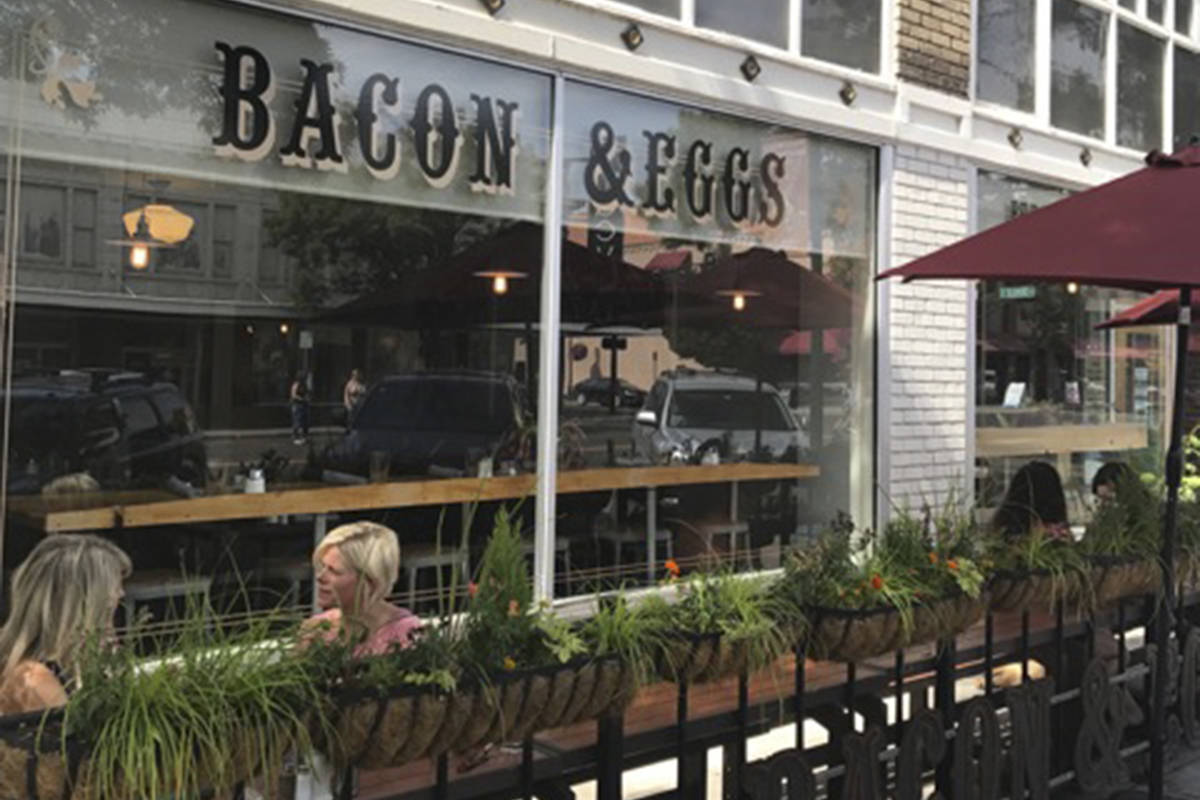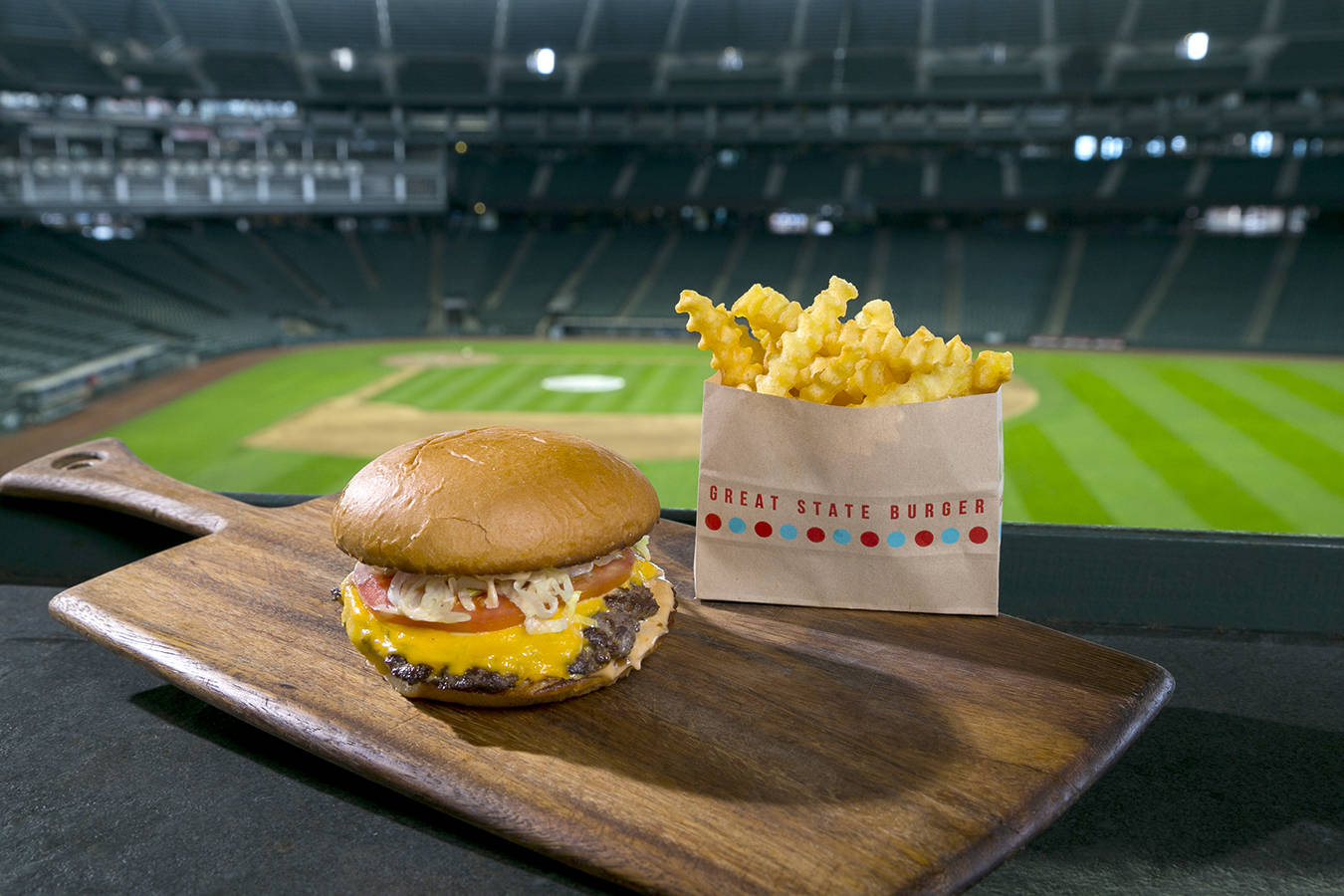First there was a farm. The restaurant came much later, almost as an afterthought. Jay Blackinton moved to Orcas Island partly to raise animals, partly to farm. There he met farmer John Steward (an aptronym if ever there was one), who welcomed Blackinton onto Maple Rock Farm and taught him how to tend the land.
Before he was getting his hands dirty in the soil, Blackinton dodged cars as a bike messenger in Seattle and San Francisco. And before that, he lived in spurts on the island with his grandparents in their double-wide trailer. “Living in the city, after a while, I couldn’t imagine anywhere else,” he says. “And so I moved back there.”
Hogstone’s Wood Oven (460 Main St., Eastsound, 360-376-4647), the restaurant he’s become known for, started in 2011 with pop-up dinners, a modern story in an unfamiliar setting. The pop-up, every Friday on the farm, gained something of a reputation with locals. It was Blackinton’s first time cooking for the public; his previous restaurant experience was mostly dishwashing and making sandwiches at random jobs.
From never farming to farming, never cooking to cooking professionally, a common thread ran clean through. “I did it just like how I’ve learned how to do everything: by fucking it up and learning,” he says. “That’s how we’ve done everything at the restaurant, too. Just trying it out and figuring out what changes I need to make, with a lot of tweaking, a whole lot of failure, and finding results. It’s a lot of mistakes.” They were very naive, he says, opening a restaurant without a lot of money or a lot of experience. But perhaps it was that naivete that allowed them to succeed, because, as Blackinton says, if they had known just how insane it was going to be, they might not have done it.
Blackinton has a lot of opportunity to make more mistakes these days, as Hogstone’s is known for its rotating menus, split between a long, luxurious dive into a chef’s-choice tasting menu and a pizza list. Both change with necessity, constantly. At Blackinton’s best estimate, the restaurant served more than 150 unique dishes last year, not including the pizzas, which also rotate constantly.

The “Death-Throes Salad.” Photo by Julia Wayne
Consider the field on a recent visit when I was privy to the tasting menu. It had rained that day, and the vegetables were plump and cool and crisp. A salad was served, but instead of a tossed or grilled thing you could find just anywhere, Blackinton pulled from the ground heads of baby lettuce, roots intact. The lettuce and its roots sat in soil and water until just before the chef quickly chopped them free.
He decorated it with herbs, flowers, and weeds that were growing nearby on the farm that day, adding an emulsion of smoked egg, piped between the leaves “to give it a little fat.” And of course, he said as he dropped it off, those eggs were from their friend’s farm down the road. He refers to it as the “death-throes salad,” adding that this head of lettuce was that close to being a taste of the farm that day. “And so the whole idea,” the chef says, “is that this is, if you could see it, this taste is that head of lettuce dying.”
While the changing menu is sometimes frustrating for his employees, who have to be in flux at all times, it’s just part of the program. When something is in season, it’s on the menu; the Maple Rock Farm supply is built right into the business plan. Steward’s farm also supplies food for other restaurants, a CSA, and the farmers market, so there’s an outlet for everything they grow.
“We don’t grow things just for us. That would be a really cool place to be in, but it would be like Blue Hill at Stone Barns,” Blackinton says, citing Dan Barber’s famous New York farm-based restaurant. That farm has monumental resources, Blackinton says, but he can still learn from it for his smaller operation.
Blackinton points to Barber’s book The Third Plate as an example of the elder chef’s philosophy around food, such as encouraging the movement toward plant-based proteins. “It’s heartening to know that there is a voice much louder than mine preaching the thing that we are practicing up here in our little corner of the Northwest,” he says. “But it’s something that we came to all on our own.”
Blackinton leans on vegetables to make up a lot of his menu. “That doesn’t always mean we have what people think they want,” he says. He does raise pigs, heritage Mangalitsas, on the island, but he doesn’t slaughter them in the summer, so you’re more likely to find pork products on the fall and winter menus. Yet lardo was on the menu the day I came in to first try Blackinton’s food, and it was rich and beautiful.
Every part of the pig is used, just as nothing is grown on the farm that can’t be served at Hogstone’s. The restaurant’s philosophy is rooted deeply in the farm, and without it, the restaurant would not have come to be, and would not be what it is. It’s a rare farm-to-table restaurant that can say such a thing and mean it.
“That’s what pisses me off about farm-to-table,” Blackinton says. “None of those chefs who work at farm-to-table restaurants have ever had to kill a pig, or to kill a pig who was freaking out and breaking into other pens and fucking shit up. They’ve never had to kill that pig at 5 o’clock in the evening in the winter, and then tried to figure out what to do with all of that meat. That’s the reality of it, and it’s fucking hard.”
food@seattleweekly.com








